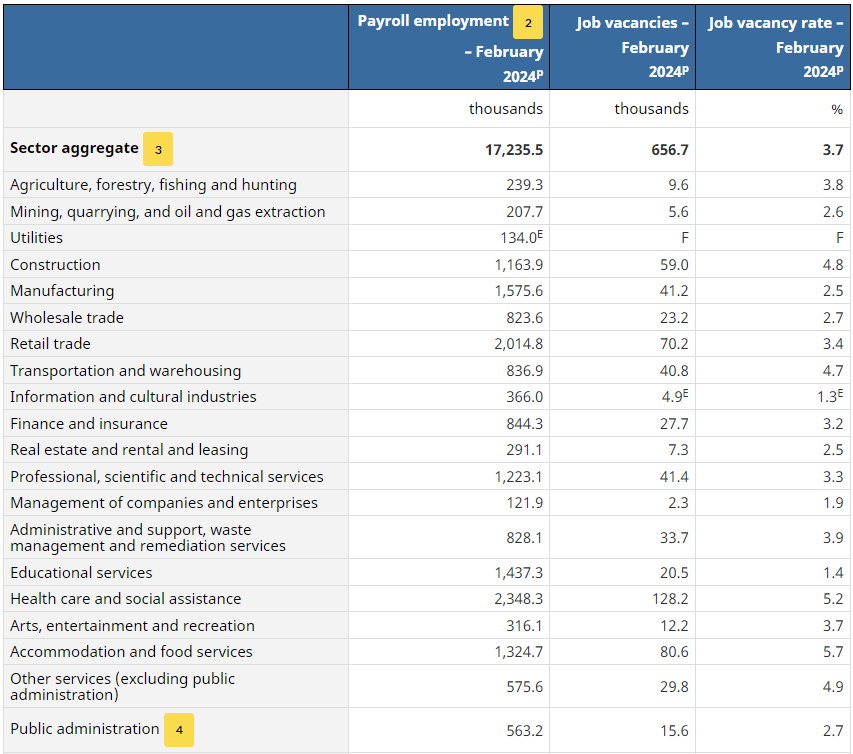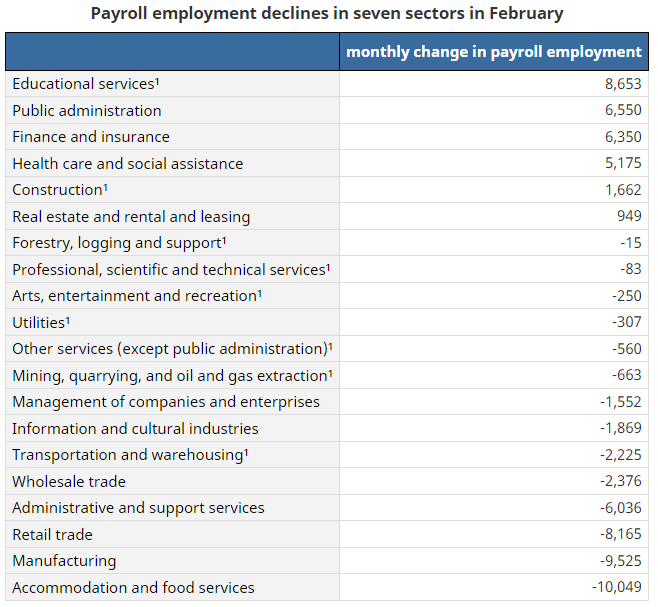Which sectors recorded the biggest gains?

Canada had a total of 656,700 payroll job vacancies in February, according to Statistics Canada (StatCan).
That number was up by 21,800 (+3.4%) from January.
Meanwhile, payroll employment dropped by 17,700 (-0.1%) in February, following an increase of 35,700 (+0.2%) in January. On a year-over-year basis, payroll employment was up by 154,700 (+0.9%) in February.
The number of payroll employees in Canada increased by 39,800 (0.2%) in January, according to StatCan.
On a month-over-month basis, average weekly earnings were up 0.5% to $1,232 in February, following an increase of 0.5% in January. On a year-over-year basis, average weekly earnings grew by 4.5% in February, following a 3.7% increase in January.

Source: Statistics Canada
The full details of job vacancies, payroll employment and average weekly earnings across sectors and Canadian provinces and territories are available on the government’s website.
Biggest winners, losers among sectors
Among sectors, educational services, public administration and finance and insurance recorded the biggest gains in employment numbers in February.
Meanwhile, accommodation and food services, manufacturing and retail trade were the biggest losers.

Source: Statistics Canada
Payroll data versus labour force survey
Jay Zhao-Murray, Canada economic data editor at BNN Bloomberg, noted that payroll employment data from StatCan indicates the country added a mere 17,000 jobs over the six-month period ending in February. That’s way below the 183,800 reported in the labour force survey, which polls households and is faster to publish results.
“It gets interesting when you start to see a little bit of a gap opening up between the two, and then the safest thing you can do is bet on payrolls, in terms of giving you leading information about what’s going on,” said Fred Demers, an investment strategist at BMO Asset Management, in the BNN Bloomberg report.
While the labour force survey’s increase in unemployment has been driven by a growing population rather than job losses, payrolls suggest those losses may soon appear in the household data, Demers said.
Self-employment and the intrinsic noise from the household survey’s small sample size may be the reasons for the growing gap, he added in the Bloomberg report.
Dominique Lapointe, director of macro strategy at Manulife Investment Management, said that the month-to-month volatility in the payroll data has been higher since the pandemic, making it harder to tell if it’s still more reliable.
The federal government expects the public service workforce population to decline by roughly 5,000 full-time equivalent positions over the next four years as part of Ottawa’s campaign to refocus spending.








